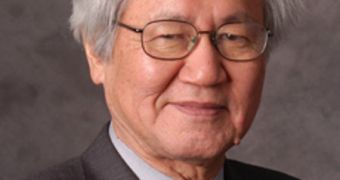Today, centuries after it first entered use, most of us take glass for granted. We view it as the common material that makes up our windows and computer/TV screens, and seldom give it a second thought. But Rensselaer Polytechnic Institute (RPI) professor and glass science pioneer Minoru Tomozawa sees things differently. For over 40 years, he has been constantly innovating this field of research, focusing his attention on its most hidden mysteries. For his accomplishments, the American Ceramic Society (AcerS) decided to present Tomozawa with the George W. Morey Award.
Glass is a material critical to numerous existing technologies, including communications. Each of these fields of research is heavily reliant on some of glass' most basic properties, such as the temperature at which the material turns into a solid from its liquid state. This “freezing” point is the central focus of Tomozawa's research, and his greatest accomplishments have been registered here. The expert received the award mainly because he developed an elegant method of calculating this temperature in a mixture that has just cooled into its final form.
“Dr. Tomozawa is one of the world’s leading authorities on glass science. He has been a leader in glass research for over 40 years. While many of his accomplishments would qualify him for the George W. Morey Award, this year’s award specifically recognizes his development of a new technique for determination of the fictive temperature of glasses as indicated by the position of infrared absorption bands and the application of this technique to a wide number of problems in glass science,” AcerS officials write in their citation.
“If you have a piece of glass, you can use our technique to tell its fictive temperature and how it was made. By determining the fictive temperature, we can then know exactly what kind of properties the glass has. The properties of glass are a function of its fictive temperature,” says Tomozawa, who is a professor in the RPI Department of Materials Science and Engineering. He has been working on developing this theory and its calculations for more than a decade. The expert is also a member of the American Ceramic Society.

 14 DAY TRIAL //
14 DAY TRIAL //